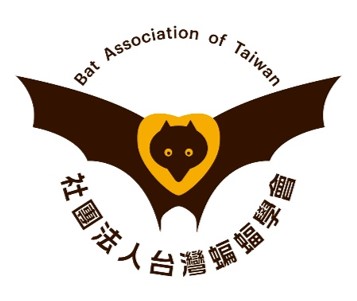蝙蝠研究
2019_臺灣無尾葉鼻蝠利用鱗翅目昆蟲的特性探討_廖崇甫
出版年份:2019
研究生:廖崇甫
分類:碩士論文
題目:臺灣無尾葉鼻蝠利用鱗翅目昆蟲的特性探討
Title:The study of Lepidoptera utilization by the Formosan tailless leaf-nosed bat (Coelops frithii formosanus)
摘要:
臺灣無尾葉鼻蝠 (Coelops frithii formosanus) 為穴居型小型食蟲性蝙蝠。冬季曾在其棲息的洞穴內發現大量鱗翅目殘翅,且數量以日行性蝴蝶居多。因此,本研究收集洞內殘翅並鑑定,以瞭解無尾葉鼻蝠取食鱗翅目的種類、聽器有無、個體數量與體型大小。以邏輯迴歸分析檢測無尾葉鼻蝠對帶回洞穴的蝶種是否在體型上有所偏好,並以卡方同質性檢定檢測各年度體型數量分布的變異。最後,以斯皮爾曼相關性分析檢測殘翅個體數與夜晚氣溫的關係。結果顯示,殘翅鑑定估算出1,194隻,其中941隻為蝴蝶,含4科49種;246隻為蛾類,有8科29種。殘翅數量最多的物種為長翅弄蝶 (n=483),而多數捕食的蛾類具有聽器。邏輯迴歸分析結果顯示,洞內蛺蝶物種體型為當地蛺蝶中偏小的種類。年度間的體型數量分布在去除長翅弄蝶後沒有顯著差異。此外,殘翅個體數與夜晚最低溫呈負相關。因此,無尾葉鼻蝠利用的蝶類多樣性高,且帶回洞穴的蝶類體型有所偏好。無尾葉鼻蝠取食鱗翅目大小範圍年間差異不大,但取食數量則受部分蝶種影響。冬季發現較多的殘翅,可能與低溫條件有利無尾葉鼻蝠撿拾鱗翅目昆蟲有關。
洞內殘翅的出現具有季節性,但無尾葉鼻蝠實際取食鱗翅目昆蟲的狀況仍有待探討。因此,論文的第二個部分利用排遺碎片分析與排遺DNA巨量條碼技術,進一步分析臺灣無尾葉鼻蝠取食的鱗翅目昆蟲,以瞭解物種組成與特性 (物種、體型、聽器),以及季節變化。樣本收集時期為2016年9月至2018年5月,並依據蝙蝠生活史週期分為度冬期、生殖期與變動期,以Kruskal-Wallis test檢測傳統與分子食性分析的組成比例在三個期間的差異;並針對各科鱗翅目比例、大小型比例、聽器蛾類比例與蝶蛾比例在三個期間的差異做檢測。結果顯示,排遺碎片分析中的相對體積比例以蜘蛛目 (52.2%)、雙翅目 (21.4%)、半翅目 (13.0%) 與鱗翅目 (8.7%) 為主;¬而整體分子食性的相對讀值比例則為鱗翅目 (45.7%)、蜘蛛目 (29.8%) 與雙翅目 (21.8%);兩個分析方法皆顯示臺灣無尾葉鼻蝠的食性組成在時期間有所差異。此外,大小型鱗翅目比例在三個時期間有顯著差異;而聽器蛾類比例與蝶蛾比例則無顯著差異。兩種食性分析方法皆顯示取食鱗翅目昆蟲的比例在度冬期最高,但夏季仍有取鱗翅目昆蟲。然而,先前殘翅所鑑定出的蝶種多於分子分析所偵測到的蝶種,推測與攜回洞內取食的蝶種體型偏好,或是取食獵物所累積的數量不同有關。此外,取食大小型鱗翅目比例的季節差異,可能與鱗翅目昆蟲季節活動力不同有關。
Abstract:
Coelops frithii formosanus is a small cave-roosting insectivorous bat. Previously, a large number of lepidopteran culled wings were found in roosts in winter. Moreover, the diurnal butterflies were more abundant than moths. Therefore, in this study, by collecting and identifying the culled wings from the caves, I analysed the lepidopteran species, individual numbers and prey size, and examined the hearing organs of species. Logistic regression analysis was used to test if C. f. formosanus preferred specific size in butterfly species, which were carried back to the caves. Chi-square test of homogeneity was used to test the prey size distribution among different years according to individual numbers. I performed Spearman’s rank correlation analysis to test the relation between the culled individual numbers and the lowest temperature at night. I totally identified and caculated 1,194 individuals from the culled wings, 941 were butterflies (4 families, 49 species) and 246 were moths (8 families, 29 species). Badamia exclamationis (Hesperiidae) was the most dominant (n=483). Most moth species had hearing organs. The culled wing species of Nymphalidae were preferred to be smaller among the local species. There was no significant difference in body size distribution through years after Badamia exclamationis was excluded from the analysis. The individual numbers from culled wings was significantly negative relating to the lowest temperature at night. Therefore, the butterfly species C. f. formosanus utilized is diverse, and C. f. formosanus has preference in body size of butterflies carried back to the caves. The range of body size which C. f. formosanus utilized is similar through years, but the utilizing abundance is affected by some butterfly species. The low temperature may benefit C. f. formosanus to feed on lepidopterans so that we can find more culled wings in winter.
Although the seasonal occurrence of lepidopteran culled wings is known, more details of complete lepidopteran utilization by C. f. formosanus remains uncovered. In the second chapter of this study, two dietary analysis methods (morphological methods and DNA metabarcoding) were used to assess the lepidopteran utilization by C. f. formosanus. The lepidopteran species component and characteristic (species, body size and hearing organs) were revealed by dietary analysis, and the seasonality was also discussed. The fecal samples were acquired from September 2016 to March 2018. The sampling period was subdivided into three periods according to life cycle of bat, namely to the winter period, breeding period and changing period. Kruskal-Wallis test was used to test the seasonal variation of the diet from morphological method and molecular method; percentage of each lepidopteran family, ratio of large prey to small prey, percentage of hearing moth and ratio of butterflies to moths were tested, too. Araneae (52.2%), Diptera (21.4%), Hemiptera (13.0%) and Lepidoptera (8.7%) comprised the major relative volume in C. f. formosanus diet according to morphological method. However, molecular method showed that Lepidoptera (45.7%), Araneae (29.8%), Diptera (21.8%) comprised the relative reads abundance. Both methods demonstrated significantly seasonal change in C. f. formosanus diet of each prey order. Furthermore, the ratio of large prey to small prey was significantly different through the three periods; the percentage of hearing moth and the ratio of butterflies to moths are not. Two dietary analysis methods shows that C. f. formosanus has a highest lepidopteran utilization in winter period; however, lepidopterans are consumed in summer, too. The butterfly species from culled wings are lesser than the species detected by molecular method, suggesting that it is due to the preference in body size of prey or the different accumulative consumption in prey. Besides, the seasonal variation in the ratio of large prey to small prey may be relative to seasonal difference in activity of lepidopterans.
